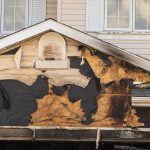Tornado Preparedness
Around 1,200 tornadoes hit the United States each year according to Ready.gov, and no state is immune to the risk. Most tornadoes occur east of the Rocky Mountains. Although they can form any time of year, tornadoes happen primarily in spring and summer. They can occur at any time, but are most likely between 3-9 p.m. They can strike with little or no warning, so it is imperative that you prepare in advance and know what to do if a tornado watch or warning is issued.
Advance preparation
Ready.gov urges you to identify safe areas in advance at work and at home. A small interior room (such as a closet or interior hallway) on the lowest level possible (such as a basement or storm cellar) will typically provide the best protection. Learn the locations of storm shelters or other sturdy buildings in areas you frequent so you can quickly go to them if needed. The safest place in a high-rise building is a hallway in the center of the building; there may not always be time to move to the lowest floor.
If you haven’t already built an emergency kit, now’s the time to get it done. You’ll need access to important documents, medications, and other supplies if you have to evacuate in a hurry.
Learn to recognize these signs of danger and be prepared to take shelter:
- Dark skies, often greenish in tint
- Large hail
- A large, dark, low-lying cloud
- An approaching cloud of debris near ground level can indicate the location of a tornado even if a funnel isn’t visible
- A strange quiet during or shortly after a thunderstorm
- The proverbial sound of a freight train approaching (loud roar of extreme wind)
When a tornado is approaching
When a tornado warning is issued, seek shelter immediately in an area you’ve previously identified. Do NOT stay in a manufactured home or office; mobile homes do not provide protection from tornadoes. Go to a sturdy shelter immediately if at all possible.
Stay as far away as possible from windows, doors, and exterior walls. Stay in the the center of the room, as corners attract debris. Most tornado injuries are caused by flying debris in high winds, so cover your head and body as much as possible with a heavy coat, blanket, or pillows. If you are outdoors, avoid bridges and highway overpasses. Try to find an area that is below ground level, such as a ditch.
Watch versus Warning
A tornado watch is issued when conditions are favorable for a tornado to develop. Tune to NOAA Weather Radio or other local news sources for updates, and keep an eye on the sky.
A tornado warning is issued when a tornado has been sighted or indicated by weather radar. Take shelter immediately. On average, the National Weather Service issues warnings 13 minutes prior to a tornado event.
You can find more severe weather preparedness information at ready.gov.
Tornadoes are among the most destructive forces in nature, and can cause devastating property damage even to well-built structures. We hope you never experience tornado damage, but if it happens you can rely on BluSky Restoration Contractors for expert storm damage repair and restoration services. Call us at 800.266.5677 or click on the big red Get Help Now! button near the top of your screen to find the nearest BluSky office. (If you’re viewing this on a mobile device, tap the “hamburger” menu button at the top to find it.)


